In the vast ocean of Tibetan Buddhism, outstanding figures emerge and become beacons of wisdom and compassion. A prominent light is the young Jetsunma Kunga Trinley Palter Sakya who carries with her the rich heritage of the Sakya Tradition, and at a young age already shows the promise of a bright future for the Buddhadharma. In this article we explore her life and impact, highlighting her role as a Jetsunma, tulku and descendant of the Sakya Khon family.
Contents
- Family lineage: deep spiritual roots
- Sustainer: guardian of the Sakya Tradition and spiritual continuity
- Female tulku and its impact
- Spiritual commitment
- The path to virtue: study, practice and action
- Jetsunma’s inspiring legacy
1. Family lineage: deep spiritual roots
Jetsunma Kunga Trinley Palter comes from an exceptional family: the Khons. Her spiritual origin is significant. She was born on January 2, 2007 in Rajpur, India, coinciding with the auspicious parinirvana day of Sakya Pandita (1182-1251). She is the first-born daughter of H. H. the 42nd Sakya Trizin Ratna Vajra (1974) and H. E. Dagmo Kalden Dunkyi (1978), and she has a younger brother and sister: H. E. Dungsay Akasha Vajra (2010) and H. E. Jetsunma Kunga Chimey Wangmo Sakya (2013).
—Jetsunma Kunga Trinley Palter (center right) and members of her immediate family: her grandfather, H. H. the 41st Sakya Trizin, Gongma Trichen Rinpoche (center back); her grandmother, H. E. Gyalyum Tashi Lhakyi (right); her father, H. H. the 42nd Sakya Trizin Ratna Vajra (center); her mother, H. E. Dagmo Kalden Dunkyi (left); and her siblings H. E. Dungsay Akasha Vajra (center) and H. E. Jetsunma Kunga Chimey Wangmo (left). 2015—
Jetsunma has grown up in the close presence of relatives and influential figures of the Sakya Tradition: her grandfather —H. H. the 41st Sakya Trizin, Gongma Trichen Rinpoche— and her grandmother—H. Em. Gyalyum Tashi Lhakyi—, among others.
Jetsunma’s name carries with it the veneration of two notable great-aunts who were highly accomplished female Sakya practitioners from the family of Gongma Trichen Rinpoche. One of them was H. E. Dagmo Trinley Paljor Zangmo (1906-1975), who played a crucial role in raising Gongma Trichen Rinpoche and his sister —Jetsun Kushok Chimey Luding— after their mother died. The other was Jetsun Pema Trinley (1874 c. – 1950), recognized and remembered as a siddha —an adept— of Vajrayogini practices. (For more on the lives of Jetsunma Kunga Trinley Palter’s namesakes, see Chapters 5 and 7 of The Sakya Jetsunmas: The Hidden World of Tibetan Female Lamas, by Elisabeth A. Benard.)
—Jetsunma Kunga Trinley Palter with a sample of ‘The Sakya Jetsunmas: The Hidden World of Tibetan Female Lamas’ by Elisabeth A. Benard, an invaluable work that offers an intimate look at the Jetsunmas of the Sakya Khon family, excellent yoginis who rose to prominence for their spiritual achievements. 2021. Image by H. E. Dagmo Kalden Dunkyi—
Every daughter born into the illustrious Sakya Khon family is given the honorific of Jetsunma at the time of her birth. The title translates as “a venerable woman, worthy of veneration, reverence or homage.” It is not only used in this tradition, but it is generally reserved for adult women who have achieved remarkable mastery in their spiritual practices. Distinguished figures such as Jetsunma Tenzin Palmo and H. E. Mindrolling Jetsun Khandro Rinpoche are contemporary examples from the Kagyu and Nyingma Traditions, respectively.
2. Sustainer: guardian of the Sakya Tradition and spiritual continuity
—Jetsunma Kunga Trinley Palter (left) receives the White Tara initiation from H. H. the 41st Sakya Trizin, Gongma Trichen Rinpoche, at Sakya Monastery in Bodhgaya (India), on November 30, 2023. Image by Sakya Department of Education—
The Sakya Khon family, a Tibetan dynasty dating back to the 11th century AD, is historically outstanding. It has produced religious leaders and spiritual teachers, dedicated and tireless guardians who have kept alive the flame of the Sakya Tradition, as well as transmitting and preserving the authenticity of the Buddha’s teachings.
Jetsunma Kunga Trinley Palter’s job as tradition sustainer will be to ensure that the Buddha’s legacy remains accessible to generations to come. How? By taking on the protection and expansion of teachings through the creation of convents and monasteries, and through the spiritual training of nuns, monks, and the community of lay followers.
—Jetsunma Kunga Trinley Palter participates in the long life offering of White Tara, offering a mandala to H. H. the 41st Sakya Trizin, Gongma Trichen Rinpoche at Sakya Center, Dehradun (India), on May 12, 2022. Image by Sakya Department of Education—
The members of the new generation of the Khon family of which Jetsunma is a part are a bridge between the past and the future. Like their ancestors, they continue to illuminate the path and adapt the method, transmitting the Dharma to new communities in a way that meets contemporary needs. They are guides and sources of inspiration, and contribute to society through spiritual, humanitarian and educational activities that reflect their commitment to benefiting all beings.
3. Female tulku and its impact
—Jetsunma Kunga Trinley Palter participates in the Vajrayogini Drubchoe pujas presided over by H. H. the 41st Sakya Trizin, Gongma Trichen Rinpoche at Sakya Center, Dehradun (India), on February 11, 2022. Image by Sakya Center Education Department—
Within Tibetan Buddhism there is a deeply rooted tradition that includes the recognition of children who embody spiritual qualities and virtues of a past teacher. These people —known as tulkus— are considered manifestations of aryabodhisattvas and have the authentic and genuine intention to help sentient beings on their path.
For the most part, tulkus are male, just as there are more male teachers than female teachers. If the Buddha gave women the same rights to practice as men, why does this persist? As H. H. Gongma Trichen pointed out in his interview with Tibet House (New York) in 2018, this is due to cultural circumstances.
Jetsunma Kunga Trinley Palter was recognized as a tulku by H. H. the 14th Dalai Lama, who identified her as the incarnation of Khandro Tare Lhamo (1938-2002), a prominent practitioner of the Nyingma school and remembered as a terton —someone who discovers hidden Buddhist texts, or termas—.
—Khandro Tare Lhamo. Image from The Treasury of Lives—
Two details about Khandro Tare Lhamo must be highlighted.
The first is about the connection with Jetsunma’s grandfather, the 41st Sakya Trizin, who in his time was recognized as two incarnations simultaneously. One of them was the very father of Khandro Tare Lhamo —Apam Orgyen Trinlei Lingpa (Apang Terchen Pawo Choying Dorje) (1895-1945)—.
On the other hand, Khandro Tare Lhamo’s mother —Damtsik Drolma— was recognized as an emanation of Guru Padmasambhava‘s chief consort, Yeshe Tsogyal. (And about Yeshe Tsogyal, stay tuned for an upcoming post in the Paramita Blog!)
The presence of a female tulku like Jetsunma Kunga Trinley Palter constitutes a significant milestone in a historically male-led culture. This places her in a unique position and entrusts her with great responsibility for the preservation and transmission of Buddhist teachings. Her influence is reflected in the inspiration she provides, reminding us all that we possess the same intrinsic potential for enlightenment, according to the teachings of the Buddha.
4. Spiritual commitment
From a young age, Jetsunma Kunga Trinley Palter has demonstrated a deep dedication to the Dharma.
In 2012, at just 5 years old, she participated in her first pilgrimage. With her parents and grandparents she visited the four most important places in the life of Shakyamuni Buddha —Lumbini, Bodhgaya, Varanasi and Kushinagar— as well as other sacred sites, including Sankissa, Sravasti, Rajgir and Vaishali.
In 2016, at the age of 9, she had already started going on weekends to the Sakya Nunnery, Sakya Rinchen Choling, in Dekyiling, Dehradun (India), the same convent of which Jetsunma will eventually become spiritual leader.
On March 6, 2017, at the age of 10, she participated in a special ceremony guided by her grandfather, H. H. the 41st Sakya Trizin, Gongma Trichen Rinpoche, who gave her Refuge Vows. At this event she received blessings and took an important step toward the aspiration —which she has had since early childhood— of being a nun.
—Jetsunma Kunga Trinley Palter’s Refuge Ceremony. March 6, 2017. Images from Melody of Dharma, Special Edition, December 2017—
Her trip to Tibet in 2017 was significant and moving both for her and for the communities in the Kham and Amdo regions that welcomed her as a recognized lama. She left a lasting impression on everyone who had the opportunity to be there. She visited several monasteries, schools and hospitals. She performed consecrations and even granted oral transmissions —of Guru Rinpoche, Tara, and Manjushri— functions normally carried out by more experienced lamas. Her tour there was a reminder of the spiritual richness and historical connection the Sakya Khon family has with their ancestral land.
In March 2019, she participated in a pilgrimage to Sri Lanka led by Dzongsar Jamyang Khyentse Rinpoche. Also attending were khenpos and professors from the Dzongsar Institute, and two of Jetsunma’s cousins—H. E. Avikrita Vajra and H. E. Abhaya Vajra Sakya—. Traveling around the country by bus, they visited numerous sacred places and temples, and climbed the Sri Paada mountain.
—Jetsunma Kunga Trinley Palter on pilgrimage in Sri Lanka. March 2019. Video from H. E. Dagmo Kalden Dunkyi—
On May 16, 2021, on the occasion of Vesak Day or Saka Dawa, Jetsunma Kunga Trinley Palter successfully concluded her first retreat, which was especially auspicious since she completed it out accompanied by her father.
—Jetsunma Kunga Trinley Palter on her first retreat. May 2021. Dehradun (India). Image from H. H. the 42nd Sakya Trizin Ratna Vajra—
Since 2021, she has participated in the Phurba Cham —sacred dance— of the Vajrakilaya Puja, which is celebrated annually during the seventh lunar month of the Tibetan calendar. She is the only Jetsunma known to do this ancient practice in all of history. When she started at just 14 years old, she was the only girl among the adults —the youngest of the group— and also the only woman among the men. An exceptional being.
This elaborate dance had never been performed outside of Tibet, and was revived a few years ago thanks to the great efforts and diligence of H. H. the 42nd Sakya Trizin. The ritual seeks to bless the land and overcome obstacles. It is done wearing special clothing, traditional decorations and hats, for long hours and under the heat of the morning sun.
—Jetsunma Kunga Trinley Palter participates for the first time in the annual Vajrakilaya ritual dance. August 19, 2021. Sakya Center Monastery, Dehradun (India). Image from H. H. the 42nd Sakya Trizin Ratna Vajra—
In 2023, Jetsunma participated in her second retreat, this time accompanied by her siblings, her mother, and various teachers, as well as khenpos, tulkus, senior lamas, monks, and nuns from across India and Nepal. This retreat was focused on the practice of The Wish Fulfilling White Tara Six Rays Longevity Prayer, and lasted a little over a month, from May 25 to June 29.
—Jetsunma Kunga Trinley Palter and her siblings participate in the fire puja at the end of their White Tara Retreat. June 29, 2023. Kalimpong Sakya Monastery, Tsechen Dargay Ling, Darjeeling (India). Image from H. H. the 41st Sakya Trizin Ratna Vajra—
Over the years, Jetsunma Kunga Trinley Palter has received numerous empowerments, initiations, blessings and teachings —publicly and privately— from her grandfather and her father as well as other great masters.
5. The path to virtue: study, practice and action
Jetsunma embodies the depth of wisdom and compassion that her title requires, and is thus an exemplary spiritual guide for all those seeking the Buddhist path, especially for the younger generations.
a. Academic and spiritual studies: exemplary diligence
Following the foundations towards her full development, Jetsunma is a diligent student. Over the years, she has balanced both academic and spiritual education. Her days start early and end late: from 6 in the morning to 9 in the evening.
— Jetsunma Kunga Trinley Palter (center) and her brother H. E. Dungsay Akasha Vajra (left) at a very young age, reading a story with their mother before bedtime. Image from H. E. Dagmo Kalden Dunkyi—
These days she focuses solely on philosophical studies —to which she dedicates about 10 hours a day—, as well as one hour more to memorize Buddhist scriptures. A highlight of this training has been her mastery in languages, as she is fluent in four: English, Tibetan, Hindi and Chinese. She has also studied Nepali.
Despite her busy schedule, Jetsunma finds time for her passions and hobbies. She enjoys swimming, art, and reading, activities that enrich her life and complement her pursuit of knowledge.
b. Commitment in action: developing the paramitas
Jetsunma Kunga Trinley Palter embodies virtues such as patience, generosity and compassion, genuinely wanting to alleviate suffering in the world. Her fervent devotion to Dharma activities serves as an example to all those around her.
The clearest manifestation of her commitment in action are her charitable works, which are reflected in various activities including:
Offering help to people in need. It is a family tradition to take to the streets on her birthday to offer blankets and food to the homeless.
—Jetsunma Kunga Trinley Palter celebrates her 13th birthday by helping to make and serve hot tea to hundreds of people who are homeless and spend the night outdoors and to others at the local government hospital, and by offering money to distribute hot shawls to some of the residents of the slums of Dharamsala (India). 2020. Video by H. E. Dagmo Kalden Dunkyi—
Donating hair. Incessantly guided by her mother, Jetsunma discovered the noble possibility of donating her own hair several times as an act of solidarity and altruism, which contributed to the making of wigs for children fighting cancer.
Defending vegetarianism. Since her birth, Jetsunma has followed a vegetarian diet, and her testimony challenges the notion that meat is necessary for optimal health. She advocates introducing children to a vegetarian diet from an early age, considering that giving up meat after having tried it can be more difficult.
In her own words shared on social media she says: “I am 12 years old. I have been a vegetarian since birth and have not experienced any negative effects on my health from not eating meat. I think it’s easy not to give meat to kids, as it will be harder to give it up once they’ve tried it. Please go vegetarian this month of Saka Dawa and if you can, go vegetarian for longer. It would be wonderful.”
With a special call during the month of Saka Dawa, Jetsunma invites us to consider vegetarianism as a benevolent and sustainable choice, highlighting the benefits for individual health and for the well-being of the planet.
—Jetsunma Kunga Trinley Palter and her brother, H. E. Dungsay Akasha Vajra, talk about vegetarianism on the occasion of Saka Dawa, 2019. Video care of Paramita—
Her messages are clear. On the one hand, being a vegetarian is feasible; and, on the other hand, it represents a very valuable contribution in moving towards a more compassionate and conscious world.
c. Wise advice for all from the new Sakya generation
During an interview that venerables Kunga, Jamyang and Pema conducted in Bodhgaya (India), in early 2023, Jetsunma shared timely advice that reflects wisdom beyond her years. In it she highlighted:
Meditation, which is one of her key recommendations. She emphasized its importance from early childhood, saying that for children —who have fewer preoccupations than adults— the practice can be more accessible, allowing them to find a natural connection to it. She also explained that the calm mind which is cultivated through this practice contributes to mental well-being, as well as decreases the chances of facing mental illness in the future.
The value of advice from elders. Jetsunma recognizes the experience that is accumulated over the years. She encourages young people to listen, reflect on and consider the guidance provided by adults to help make informed decisions.
Genuine happiness. For Jetsunma, true happiness lies in maintaining a balance and understanding reality as it is. In her own words:
I don’t think renunciation means being happy all the time;
it’s just being able to see life for what it is and not being sad… to just be calm.
—Jetsunma Kunga Trinley Palter with venerables Pema, Kunga and Jamyang after their interview in January 2023 at Sakya Monastery in Bodhgaya (India). Image from H. H. the 41st Sakya Trizin Ratna Vajra—
6. Jetsunma’s inspiring legacy
Jetsunma Kunga Trinley Palter stands as an inspiration to all due to her full dedication to Tibetan Buddhism and her role as a female tulku. Her life, rooted in a rich family lineage, reflects a deep connection to a centuries-old spiritual tradition. This is intertwined with her comprehensive education and multilingualism, revealing a great ability to balance various facets of her life and a clear understanding of spirituality and action in the world.
Her leadership in humanitarian endeavors, advocacy of vegetarianism, and wise advice for meditation and the pursuit of genuine happiness resonate with both followers of Buddhism and people of diverse generations, faiths, and cultures.
The inspiration that emanates from Jetsunma lies not only in the way she approaches her spiritual development, but also in how she applies Buddhist teachings.
—Interview with Jetsunma Kunga Trinley Palter, conducted in 2020 by The Sakya Tradition—
The spiritual dedication of Jetsunma Kunga Trinley Palter Sakya inspires and greatly encourages us, the sangha members collaborating with the Paramita Blog.
What “spiritual keys” has the story of her life transmitted to you?
What aspects have motivated you? How?
Let us know in the comments!

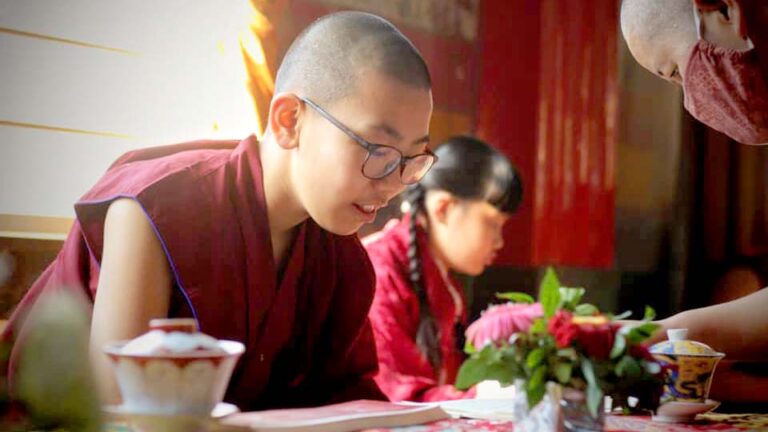
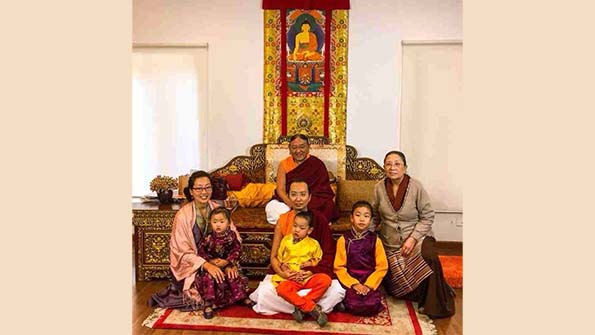

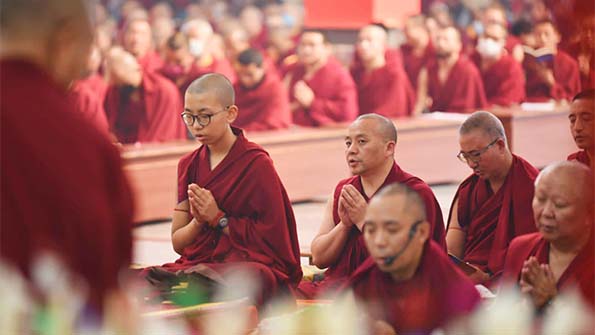
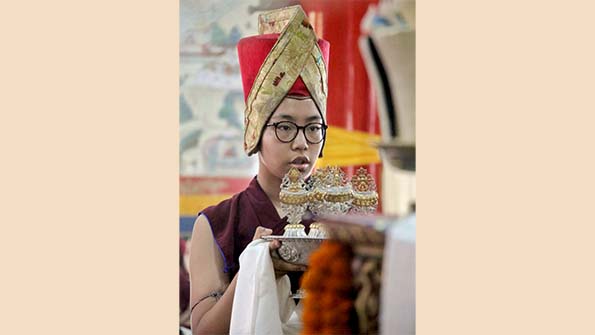
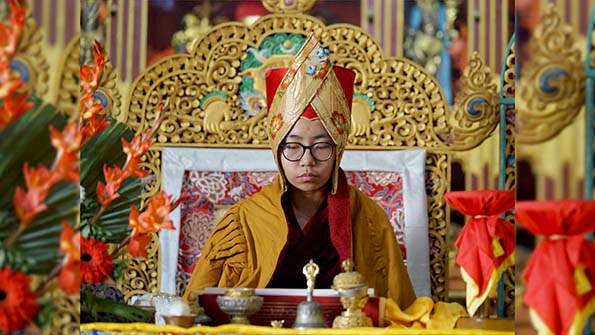
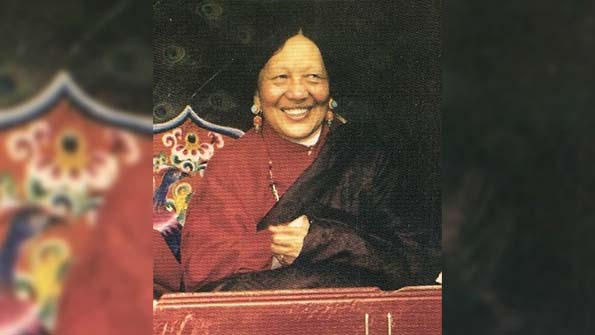
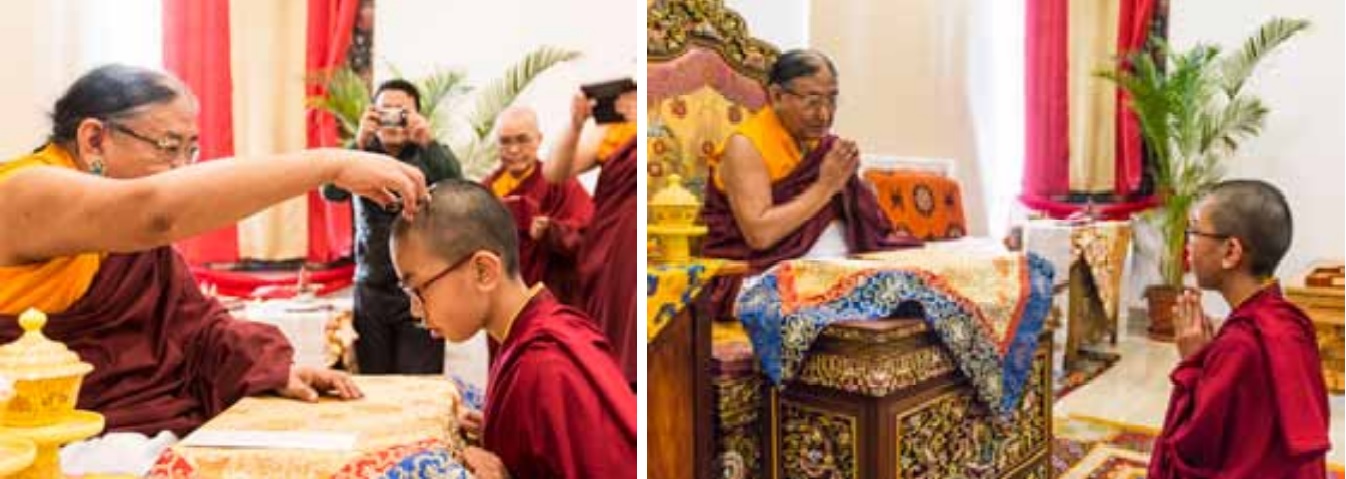
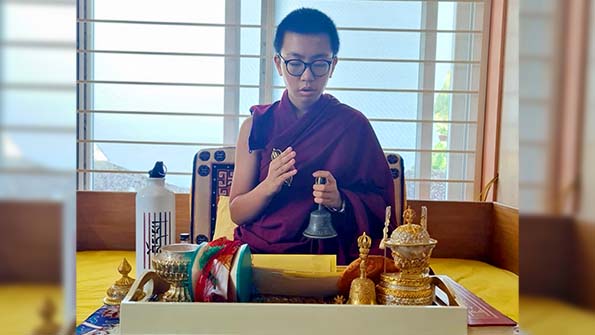
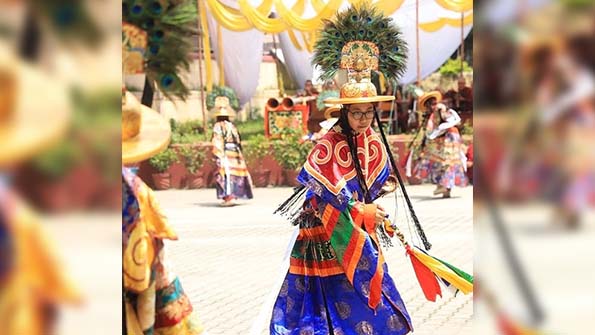
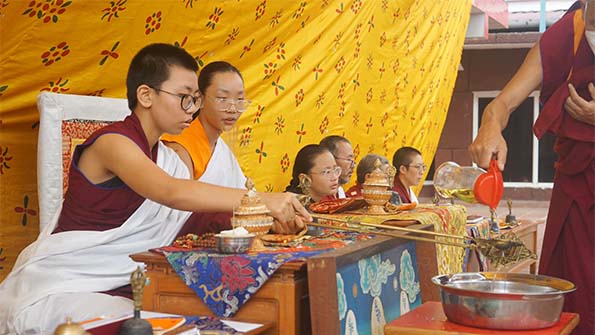
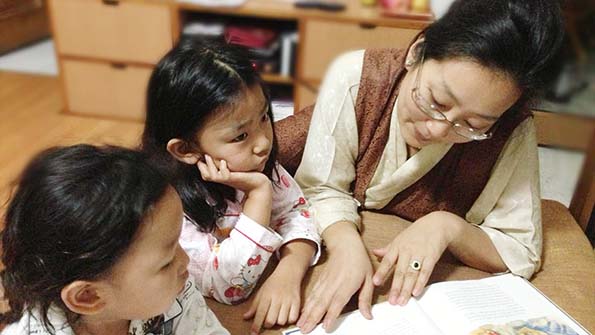
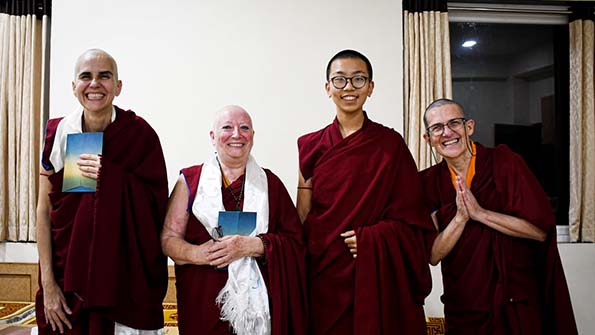

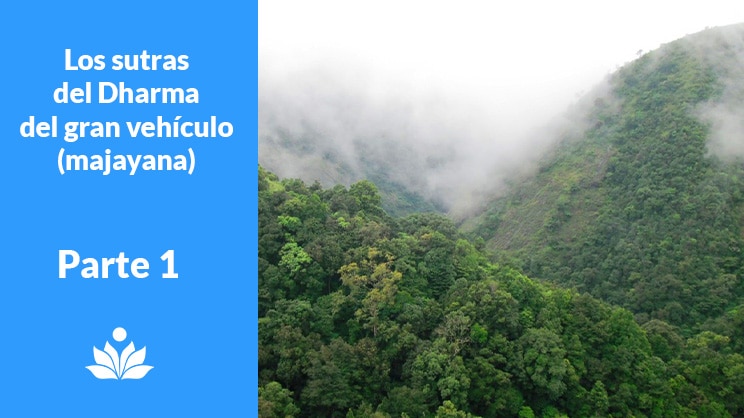
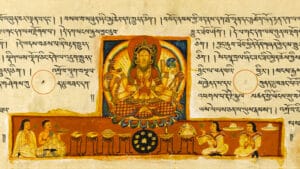



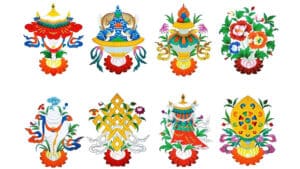
Un comentario
Thank you so much for the inspiring article.